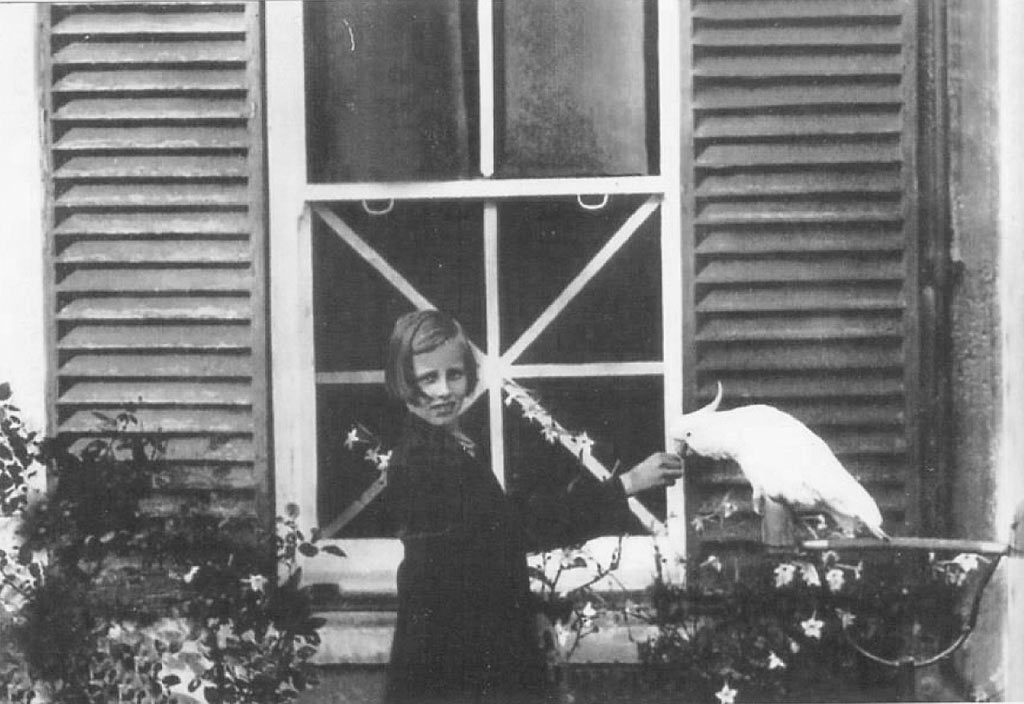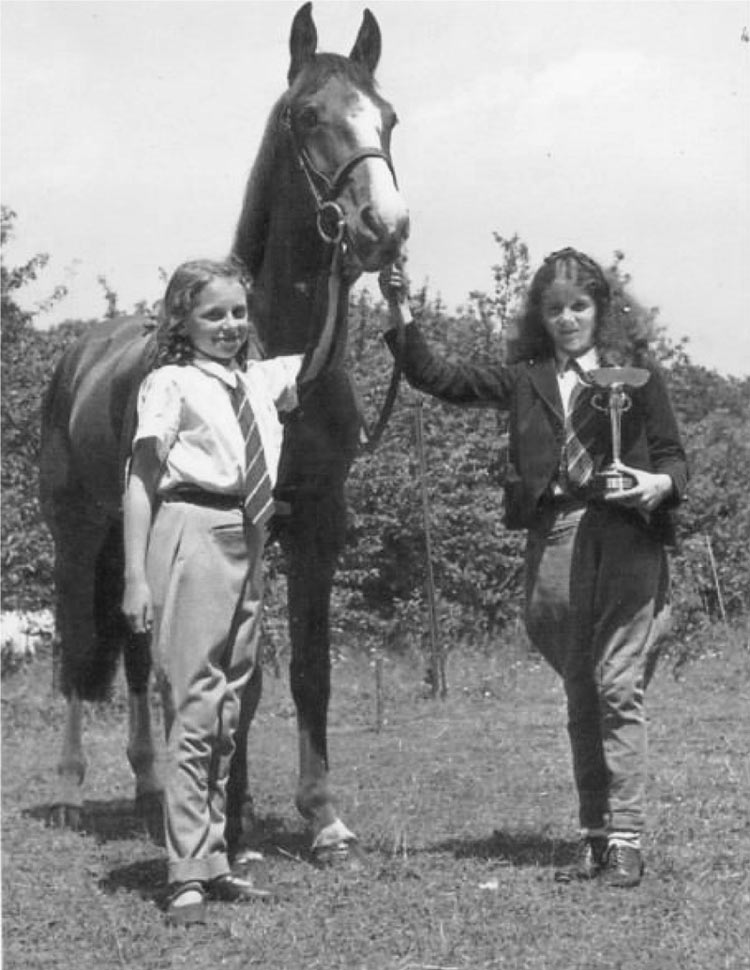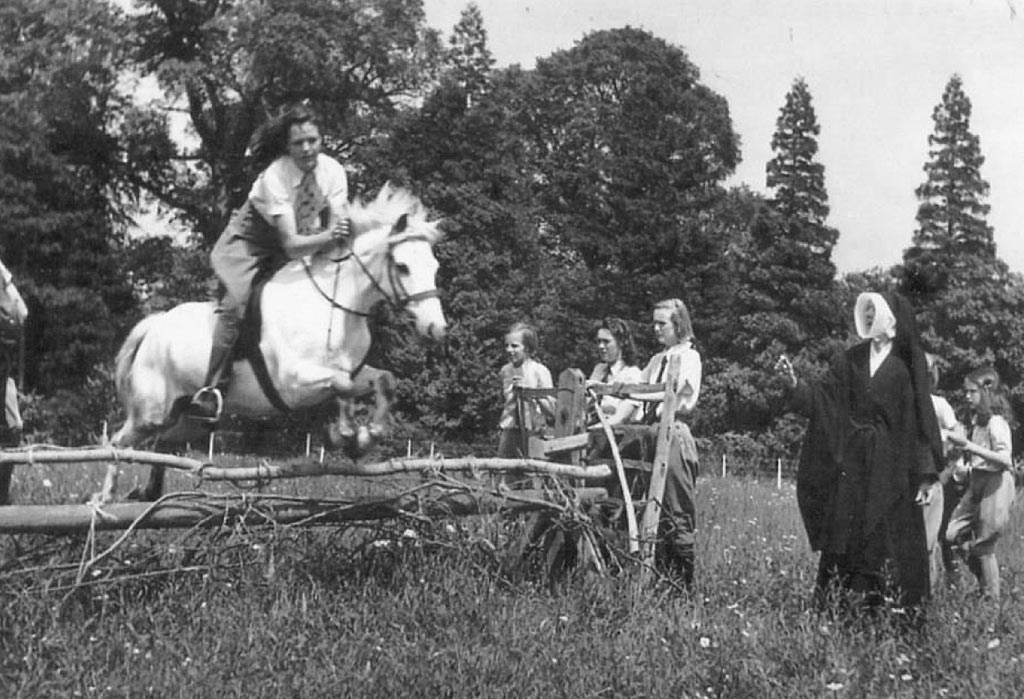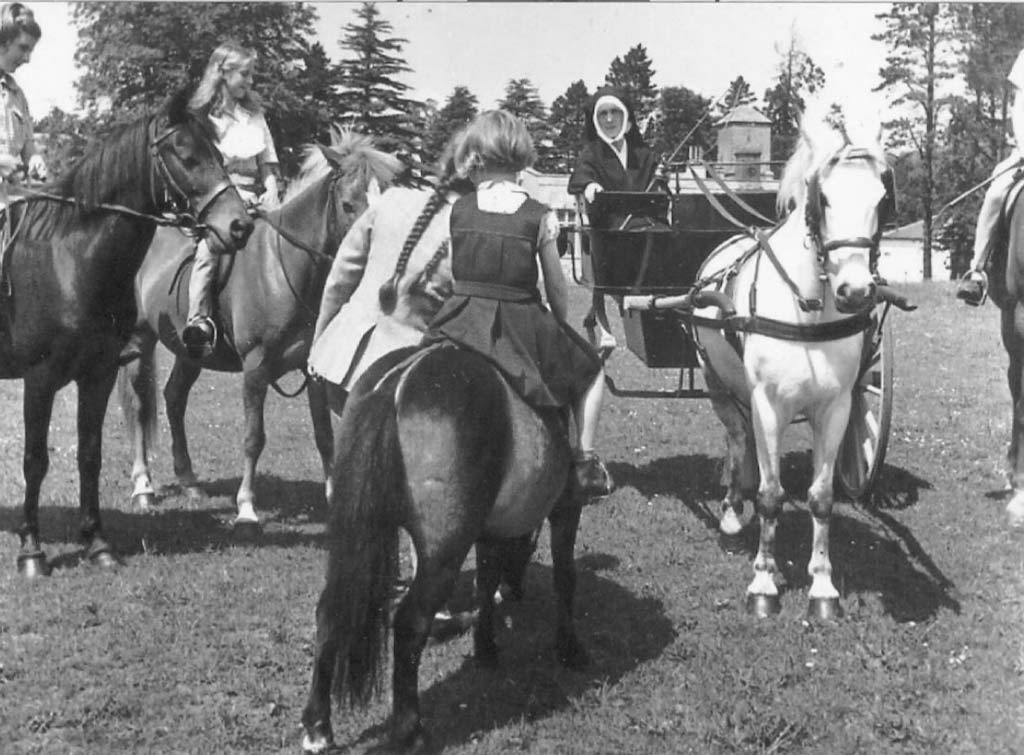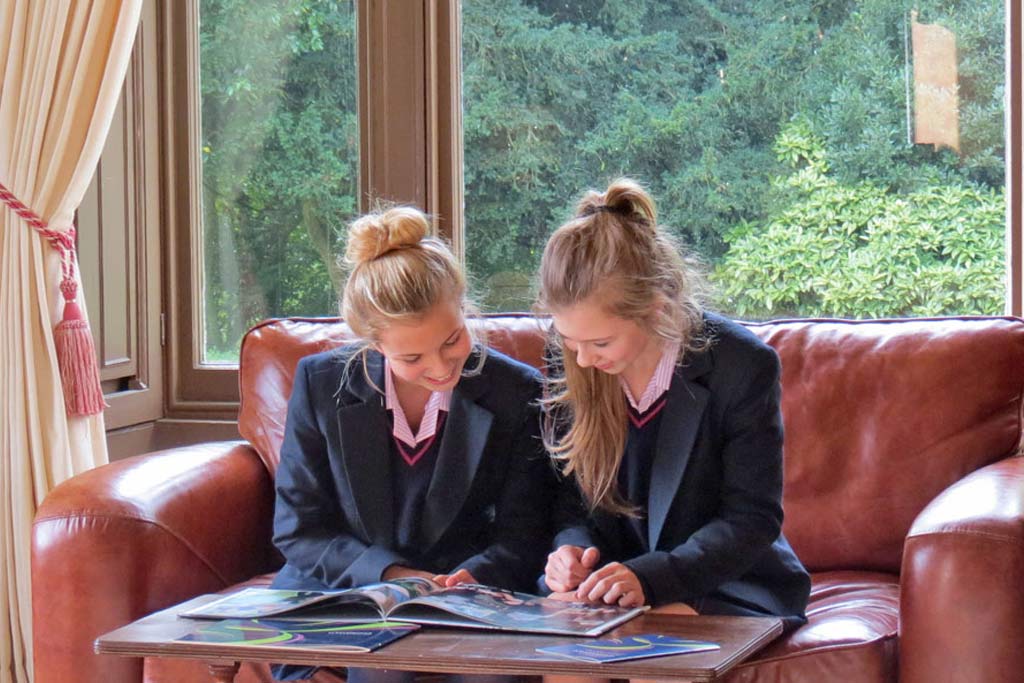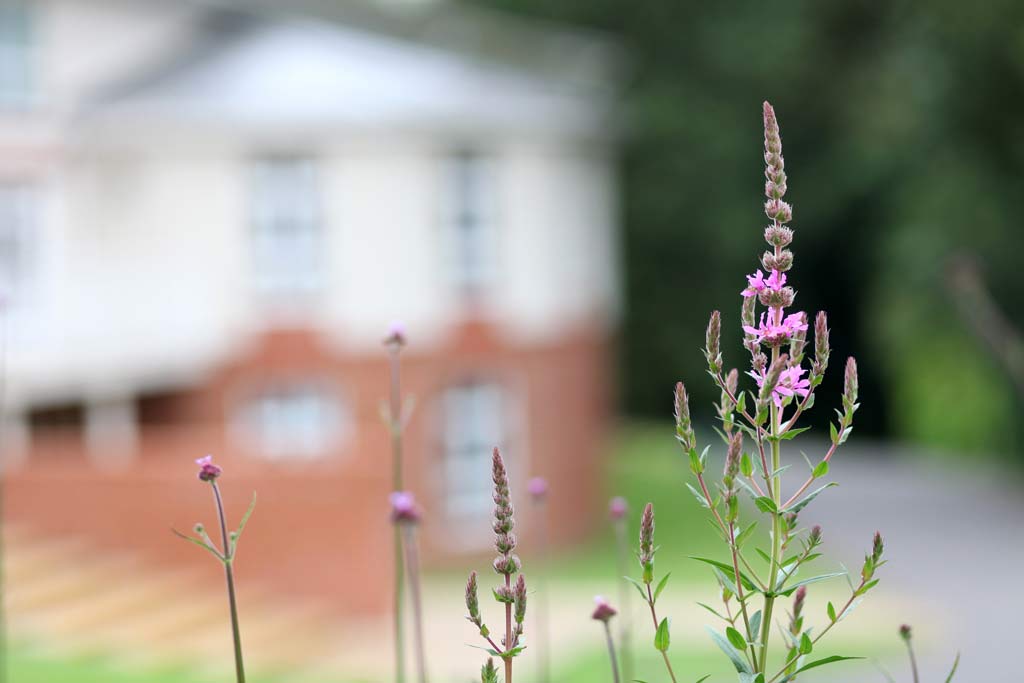Some Memories of St Teresa’s during the WW2 Years
by Virginia van der Lande 1949
Virginia van der Lande 1939, aged 9 feeding Cocky, who belonged to the Calburn’s who one owned the house.
Nun’s Horse wins Derby
Saudades and Caroline Calburn holding the Derby cup.
To raise money for a Spitfire, a special pony Derby was run at Epsom. Ridden by Gordon Richards, the leading jockey of the day, Saudades was entered and won. He made the front page of the Evening Standard “Nun’s Horse wins Derby” Following this Picture Post, a weekly magazine , ran a two-page feature and their photographer visited the school.
I joined St Teresa’s as a boarder aged 9, in 1939, where I stayed until I went to Cambridge in 1949 to study Natural Science.
I was very happy and made many friends. However, we led a spartan existence. Mass six times a week meant getting up at 6.30am, except on Sundays when we had an extra half an hour in bed. The bedrooms and dormitories were unheated and we washed in the tepid water left in the hot water bottles which Sister Dot had filled for us the night before. Ice inside the windows or even in the jugs of water was not uncommon nor was chilblains. Fuel economies meant infrequent, tepid shallow baths. Tortoise stoves heated the classrooms inefficiently.
The grounds were a delight with herbaceous borders, long sweeping lawns and bluebells in the woods, and all sorts of secret corners in the abandoned greenhouses of what had once been a grand country estate. No ‘black-outs’ for us; we generated out own fifty volt electricity using noisy diesel engines near the classrooms and batteries of lead accumulators, serviced by the lay sisters. Vatican II had not yet happened when the distinction between ‘Mothers’ and ‘Sisters’ was abolished and their habits simplified. The original dog kennels and outbuildings were still recognisable. In the long summer evenings (double Summer Time), owls and nightjars called in the woods at the back lawn.
However, for me one of the delights was the opportunity to ride, for the Covent had its own ponies and even a horse, Mother Veronica teaching riding as well as Art. As it was wartime, the enclosure rule was dispensed so that at the weekends, riding side-saddle, she took us on hacks to the Silent Pool and Polesden Lacey. Logs on both sides of the road on Ranmore Common preventing Enemy craft from landing, made wonderful jumps for better rides. Otherwise, there was tack to be cleaned, stables to be mucked out so our weekends were full and happy. Once a week Silver was harnessed to the governess cart and we might be invited to accompany Mother Veronica to the butcher to collect the school’s meat ration.
Peace in 1945 was celebrated when almost the entire school danced around a bonfire at the far end of Effingham Common, nuns and pupils linking arms and singing while marching back to the Covent in the dark, the church bells becoming fainter and fainter. Two foals were born, one a colt. As a VI form biologist, I was allowed to attend his operation and took the remains to the lab for detailed examination.
1943 Pat (Morley Mower) Lee twin of Joan (Morley Mower) Powell riding Silver
Petrol rationing meant limited family outings and a lot of walking to catch the bus at Dog Kennel Green for Dorking, or even more along Beech Avenue to Effingham Junction if going to London for ‘culture’. I will never forget emerging from the Underground and seeing St Paul’s Cathedral standing proudly high amid the desolation. Another memory: the National Gallery, with sandbags protecting a few precious treasures temporally removed from safekeeping. Myra Hess, a Jewish refugee who was a world–famous pianist, played Bach while we ate our sandwiches in one of its empty galleries.
Picture Post – 1943 Shows Silver pulling the governess cart used to collect the meat ration, with Mother Veronica (in full habit) driving.
We were machine gunned during the Battle of Britain but no one was hurt. Afterwards, we struggled to extract bits of shrapnel from the gym wall. I think it was then that one of our ponies , our best, an ex-polo mount, panicked, injuring itself so badly on barbed wire that it had to be put down, its remains later taken to the beagle kennels nearby.
I do not ever remember being frightened; the nuns somehow made it all seem a game even when we had to get up from our warm beds to sleep on sacks of hay in the huge wine cellars under the old house. I remember doing mock school certificate exams there on my lap during one alert.
Teaching was rather hit and miss; the teaching nuns were underqualified and our young teacher of French was called up to join the ATS. A retired one resumed her old profession to take us for Geography and Biology. We were not very kind to her; she wore yellow self-dyed lisle stockings. However, something stuck; she was obsessed with Tristan da Cunha, reading us long extracts about the island. In 2010, I managed to get to that remote and fascinating place, remembering Miss Dapp!
In 1945, a weekend ride took us into a thickly wooded area. There we found an encampment of soldiers, with tents and washing hanging up to dry. They were very much off-duty, in collarless tops and braces. What must they have thought! Mother Veronica, in her habit, side-saddle on the horse Saudades leading a gaggle of teenage schoolgirls on assorted ponies which included Blackie with a red bow on her tail to remind that she kicked! All around there was military paraphernalia which includes small boats. A few weeks later, we went back to the same place. Everything had disappeared; in the meantime, the invasion by the Allies had started. The end of the War in Europe was in sight.
Virginia van der Lande
Nottingham 2014
